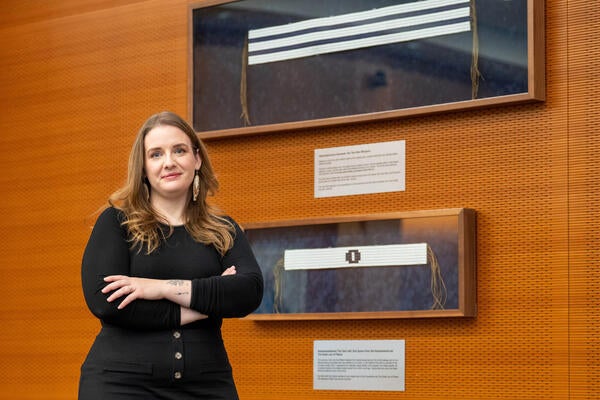
New research supports stricter social and economic mandates to reduce COVID-19 spread
Policy restrictions on business operations and social gatherings, and indoor mask mandates, associated with COVID-19 case reductions.

Policy restrictions on business operations and social gatherings, and indoor mask mandates, associated with COVID-19 case reductions.
By Media RelationsAs more people return to indoor settings for work and school, new research shows stricter policy restrictions on business operations and indoor mask-wearing reduced COVID-19 cases in Ontario during the first and second waves.
A new study led by researchers from the University of Waterloo found that stricter non-pharmaceutical interventions, such as policy restrictions on business operations and social gatherings, and indoor mask mandates, are associated with COVID-19 case reductions. Further, estimates based on publicly available Google mobility data suggest that increases in workplace attendance are correlated with higher case counts.
“Public health measures such as mandatory mask use have become increasingly unpopular and divisive in society,” said Anindya Sen, a professor in the University of Waterloo’s Department of Economics. “However, our study offers evidence that these measures do work in reducing the incidence of disease. The results of the forecasting exercises should also be useful to policymakers from a planning perspective.”
In undertaking the study, the researchers used the Google data to assess the effects of public mobility to destinations commonly frequented, such as grocery and retail stores and workplaces. The researchers found that relatively simple forecasting models— known as “time-series models”—can predict one week ahead trends in daily COVID-19 cases in Ontario with some accuracy and are more precise than Ontario government forecasts.
“Our models also offer more accurate daily forecasts than the susceptible-infected-removed model that epidemiologists typically employ,” Sen said. “Matching these mobility measures to corresponding trends in COVID-19 cases should be useful to policymakers in deciding specific types of economic and social lockdowns, as there are still gaps in knowledge on which types of population mobility are the most responsible for the spread of COVID-19 cases.”
The study, Estimating the Effects of Non-Pharmaceutical Interventions (NPIs) and Population Mobility on Daily COVID-19 Cases: Evidence from Ontario, authored by Sen and Waterloo Department of Statistics and Actuarial Science colleagues Nathaniel Stevens, Francis Kiwon, Stefan Steiner, Plinio Morita from the School of Public Health Sciences, and University of Pennsylvania’s Qihuang Zhang, has been accepted for publication in the journal Canadian Public Policy.

Read more
New research from the University of Waterloo centres Haudenosaunee-led efforts in the repatriation and reclamation of cultural and intellectual property

Read more
Researchers awarded funding to investigate ecology, climate change, repatriation, health and well-being through cultural and historical lens

Read more
New Canada Research Chairs will tackle future-focused problems from social robots and intergroup attitudes to geochemistry and nanoscale devices
The University of Waterloo acknowledges that much of our work takes place on the traditional territory of the Neutral, Anishinaabeg, and Haudenosaunee peoples. Our main campus is situated on the Haldimand Tract, the land granted to the Six Nations that includes six miles on each side of the Grand River. Our active work toward reconciliation takes place across our campuses through research, learning, teaching, and community building, and is co-ordinated within the Office of Indigenous Relations.